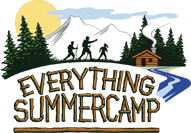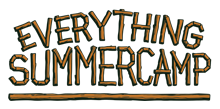Hey, Camp Folks!
A few months back in September, I wrote about a cool activity that’s available at summer camps across the country: Trapshooting. Trap Shooters require focus, patience, and an alert eye in order to be successful shooting a shotgun at a clay targets being launched away from them. Sort of an accidental sport, Trapshooting got its start as a means of practice for bird hunting.

You can check out the Trapshooting Blog post I wrote to learn more about the sport when you click right here. Today’s post, however, is about a legendary Trap Shooter, Captain Bogardus—the wing shot champion of the world.
This sport had been around since the late 1700s—back when real birds were used, but Bogardus took it up in 1868 after the transition to glass balls had been made. Often enough, the glass balls were filled with a colored powder that would really accentuate the visual effect of a direct hit!
Bogardus really made a splash in the Trapshooting world. He went on to win many championships and made a big name for himself as one of the most successful Trap Shooters in the early years of the sport. Enter: Doc Carver. Another Trap Shooter who was already a giant fan of Captain Bogardus by the time he came onto the scene. He had gotten serious about honing his Trapshooting skills around 1875 and made a name for himself just a few years after that.
He reputation rose so steadily that he would soon come to be referred to as "the man who can put a bullet through a silver quarter while the coin is flying through the air."
Carver wanted so badly to compete against his Trap Shoot hero, Captain Bogardus, but he had to wait six years until they would finally be pitted against each other. In the spring of 1883 these two legends came together for a match.

It was a big deal: the two greatest shots going head to head in the worldwide Shooting Championship! They met in Louisville, Kentucky on February 21 of 1883. So much hype and the match was over before you knew it. It was the less-experienced Doc Carver that came out the victor. He won 19 out of 25 matches, claiming the title of Champion Rifle Shot of the World!

Discover your Trapshooting skills and maybe you’ll find that your abilities exceed those who first inspired you! Look into the activities your camp offers or get out to a Trapshooting facility near you and test out your skills to see how much you enjoy it. Have fun out there and, as always, thanks for reading!
- John









